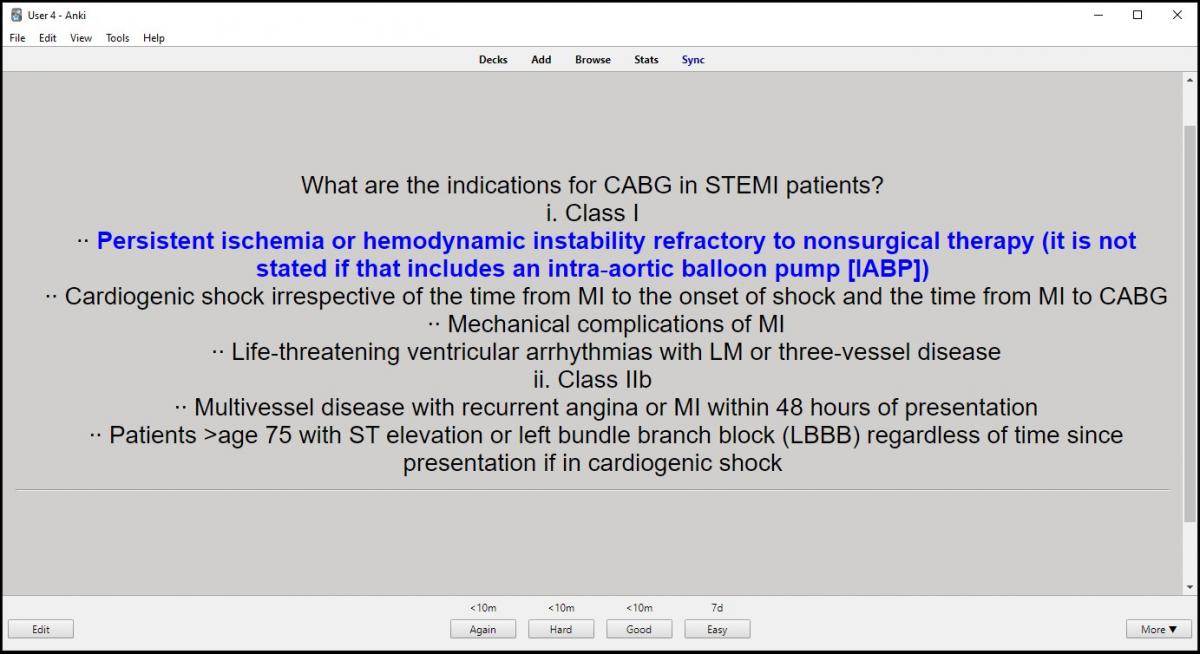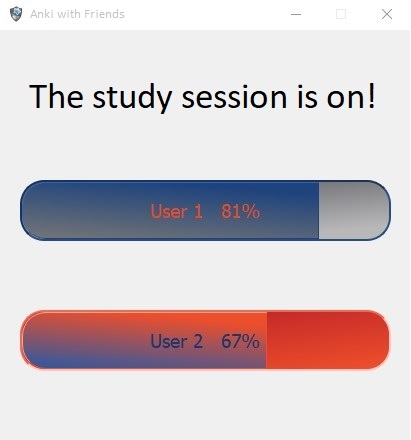ALERT!
This site is not optimized for Internet Explorer 8 (or older).
Please upgrade to a newer version of Internet Explorer or use an alternate browser such as Chrome or Firefox.
Generation X: Reaching the Minds of Residents and Fellows
Policarpio J. Generation X: Reaching the Minds of Residents and Fellows. October 2022. doi:10.25373/ctsnet.21325491.v1
As the current generation of baby boomer cardiothoracic surgeons approach their retirement and those of Generation X have entered their careers, millennials have begun to infiltrate surgical training programs as residents and fellows in cardiothoracic surgery. With youthful enthusiasm arrives a new perspective from minds who so heavily rely on computer technology; thus, traditional learning techniques may fail to reach them. One common paradigm of self-directed study for medical students and junior residents today, for example, prioritizes preparatory materials for board examination, such as videos and online modules, over textbooks. This is a far cry from Sir William Osler’s oft-quoted metaphor stated in his 1901 work “Books and Men” in the Boston Medical and Surgical Journal: “to study the phenomenon of disease without books is to sail an uncharted sea, while to study books without patients is not to go to sea at all” (1).
Although incoming junior surgeons may have embarked on their own uncharted journey, they do not sail blindly. Novel innovations in both graduate and undergraduate medical education continue to adapt andragogical styles to a new generation. Gamified learning using an electronic flashcard software called Anki stands for one such innovation.
Literature Review
In recent years, the body of literature investigating spaced repetition in medical education has grown. Using the spacing effect, this learning strategy theorizes that more repetitions of a given concept over progressively longer time intervals helps increase the chance of remembering that concept for a longer duration of time. In undergraduate medical education, one study has shown that student-directed retrieval practice predicts licensing exam performance in medical students (2). There is also ample evidence in support of this learning style in graduate medical education. For example, one study demonstrated the feasibility of a web-based curriculum using spaced repetition in diagnostic radiology postgraduate first-year residents (3). Another report proposed a spaced repetition model using a standardized, comprehensive electronic flash-card deck in plastic surgery trainees (4).
The Anki flash-card software was specifically mentioned in a report of spaced repetition and active recall for trainees in otolaryngology, which supported the use of Anki and compared it to a specialty-specific app called OtoRecall (5). The use of this flash-card software is further validated by an observational study of orthopedic surgical residents that found a statistically significant correlation coefficient of eighty-six percent between time spent using Anki and examination scores (6).
However, the efficacy of spaced repetition in residency training programs remains controversial. A pediatric residency program that implemented spaced repetition multiple choice questions into their “academic half-day” curriculum found no significant difference between performance on reinforced and unreinforced questions (7). Additionally, a spaced repetition flash-card system implemented into an obstetrics and gynecology training program found no statistically significant difference between the previous year’s exam scores of trainees who did not use the flash-card system, although a subjective correlation between flash card use and exam scores was noted (8).
In addition to investigating the spaced repetition use of flash cards, the theoretical and practical considerations of gamification strategies in medical education have been described in the literature (9). One study, polling program directors of family medicine and internal medicine programs, found that 92 percent of program directors were in support of the use of games as an educational strategy, and 80 percent reported already using them in their programs (10). There is more recent evidence in the literature supporting the use of gamification for residents in general surgery, robotic surgery in urology, and emergency medicine (11–13).
Gamification of Spaced Repetition
While both spaced repetition learning and gamification have been adequately described in the literature, gamification of spaced repetition flash-card study remains an untapped opportunity for research in educating the next generation of learners in cardiothoracic surgery.
Anki is a free and open-source flash-card software based on the empirically supported learning principles of retrieval practice and spaced repetition. Used widely by residents and medical students, Anki is conventionally operated by one learner without peer interaction using flash-card decks unique to individual learners, though additional templates are available online. The software allows for third-party extensions, called add-ons, to provide additional features. As this learning technique can involve tedious repetition, adding game-like elements to traditionally nongame activities, also described as gamification, achieves learning goals by increasing motivation with both solo and multiplayer configurations. The add-on creates real-time online connections between peers through a remote server, so that a learner may view team progress or engage in friendly competition.
Opportunity in Cardiothoracic Surgery
In cardiothoracic surgery training, gamification with low-fidelity simulations demonstrated improvement in the screening exam and all other areas of assessment (15). While this study was praised for attempting to modernize residency training programs in thoracic surgery, it was also criticized, along with other contemporary empirical gamification studies, for shortcomings in methodology, including the lack of a control group (16).
Gamified flash-card software may assist cardiothoracic surgical trainees in memorizing clinical practice guidelines, such as American College of Cardiology (ACC) and American Heart Association (AHA) indications for surgery in coronary artery disease (CAD), or National Comprehensive Cancer Network diagnosis and treatment algorithms in lung cancer. The software allows the student or resident to view the progress of others—serving as comparative feedback for self-directed study—or tailor a study session to emphasize specific information the learner found difficult during prior sessions, while deemphasizing unchallenging information by employing the spaced repetition algorithm. User progress and study activity may be measured and stored with appropriate configuration, offering a potential for earning continuing medical education (CME) credits—although there is not knowledge of any existing CME activity using the Anki platform.
The utility of gamification in cardiothoracic surgery may even extend beyond medical education and into patient counseling. A randomized control trial investigating gamification and teach-back training of patients undergoing coronary artery bypass grafting showed that there was a significant improvement in dietary, ambulation, and medication treatment adherence in both the gamification and teach-back groups when compared to the usual, routine patient care (14).
Using the Software
Detailed instructions for software setup are available upon request. Learners can either create their own deck of flash cards or import a premade deck, such as the ACC/AHA CAD indications for surgery made available by the manuscript author. Multiple-user connections require the Anki with Friends add-on, a download available internally.
Within the software, learners are presented with flash cards according to their unique spaced repetition algorithm based on previous responses. The flash cards contain fill-in-the-blanks, such as that pictured in figure 1. After clicking the button labeled “Show Answer,” the answer is displayed and the learner is prompted to score their ability to recall that answer (figure 2). The learner’s response is recorded and factored into the time until the learner will again see the flash card. Flash cards that are answered as “easy” are displayed less often, and responses recorded as “again” or “hard” are shown more often, with a continuum of time intervals and delays.
The multiuser Anki add-on is currently supported on a public server maintained by the author. Shown in figure 3 is an example of a study session between two learners. The open-source code for both the client application and server are available on GitHub, allowing for privately hosted, institution-specific customization and usage statistic reporting. Further information is available upon request.

Figure 1. A flash card prompting the learner for Class I indications for CABG in STEMI patients, before the answer is displayed.

Figure 2. A flash card prompting the learner to score their response to a fill-in-the-blank for Class I indications for CABG in STEMI patients, after the answer is displayed.

Figure 3. The multiplayer window during a study session, which allows users to view others’ real-time progress.
The author is a fourth-year medical student applying for an I-6 residency in cardiac surgery.
References
- Amedee RG, Seoane L. From the Editor’s Desk: Sailing Osler’s Uncharted Sea with Innovation and Collaboration at the Helm. Ochsner J. 2016;16(1):1-2.
- Deng F, Gluckstein JA, Larsen DP. Student-directed retrieval practice is a predictor of medical licensing examination performance. Perspect Med Educ. 2015;4(6):308-313. doi:10.1007/S40037-015-0220-X
- Ayoob A, Hardy P, Waits T, Brooks M. Development of a Web-based Curriculum to Prepare Diagnostic Radiology Residents during Post-Graduate Year 1 by Promoting Learning via Spaced Repetition and Interim Testing: If You Build It, Will They Come? Acad Radiol. 2019;26(8):1112-1117. doi:10.1016/J.ACRA.2019.02.011
- Koenig ZA, Henderson JT, Brooke SM. Creating a Spaced Repetition Model to Supplement Education in Plastic Surgery. Plast Reconstr surgery Glob open. 2022;10(5):e4317. doi:10.1097/GOX.0000000000004317
- Marinelli JP, Hwa TP, Lohse CM, Carlson ML. Harnessing the power of spaced repetition learning and active recall for trainee education in otolaryngology. Am J Otolaryngol. 2022;43(5). doi:10.1016/J.AMJOTO.2022.103495
- Lambers A, Talia AJ. Spaced Repetition Learning as a Tool for Orthopedic Surgical Education: A Prospective Cohort Study on a Training Examination. J Surg Educ. 2021;78(1):134-139. doi:10.1016/J.JSURG.2020.07.002
- McConnery JR, Bassilious E, Ngo QN. Engagement and learning in an electronic spaced repetition curriculum companion for a paediatrics academic half-day curriculum. Perspect Med Educ. 2021;10(6):369-372. doi:10.1007/S40037-021-00680-X
- Tsai S, Sun M, Asbury ML, Weber JM, Truong T, Deans E. Novel Spaced Repetition Flashcard System for the In-training Examination for Obstetrics and Gynecology. Med Sci Educ. 2021;31(4):1393-1399. doi:10.1007/S40670-021-01320-Z
- Rutledge C, Walsh CM, Swinger N, et al. Gamification in Action: Theoretical and Practical Considerations for Medical Educators. Acad Med. 2018;93(7):1014-1020. doi:10.1097/ACM.0000000000002183
- Hamari J, Koivisto J, Sarsa H. Does gamification work? - A literature review of empirical studies on gamification. Proc Annu Hawaii Int Conf Syst Sci. Published online 2014:3025-3034. doi:10.1109/HICSS.2014.377
- McAuliffe JC, McAuliffe RH, Romero-Velez G, Statter M, Melvin WS, Muscarella P. Feasibility and efficacy of gamification in general surgery residency: Preliminary outcomes of residency teams. Am J Surg. 2020;219(2):283-288. doi:10.1016/J.AMJSURG.2019.10.051
- Moran GW, Margolin EJ, Wang CN, DeCastro GJ. Using gamification to increase resident engagement in surgical training: Our experience with a robotic surgery simulation league. Am J Surg. 2022;224(1 Pt B):321-322. doi:10.1016/J.AMJSURG.2022.01.020
- Smart J, Olson AS, Muck A. Asynchronous Curriculum “Socially Synchronized”: Learning Via Competition. West J Emerg Med. 2019;20(1):6-8. doi:10.5811/WESTJEM.2018.10.39829
- Ghorbani B, Jackson AC, Noorchenarboo M, et al. Comparing the Effects of Gamification and Teach-Back Training Methods on Adherence to a Therapeutic Regimen in Patients After Coronary Artery Bypass Graft Surgery: Randomized Clinical Trial. J Med Internet Res. 2021;23(12). doi:10.2196/22557
- Mokadam NA, Lee R, Vaporciyan AA, et al. Gamification in thoracic surgical education: Using competition to fuel performance. J Thorac Cardiovasc Surg. 2015;150(5):1052-1058. doi:10.1016/j.jtcvs.2015.07.064
- Yuh DD. Gamification in thoracic surgery education: A slam dunk? J Thorac Cardiovasc Surg. 2015;150(5):1038-1039. doi:10.1016/J.JTCVS.2015.08.004
Disclaimer
The author has no conflicts of interest and derives no income from this software.
The information and views presented on CTSNet.org represent the views of the authors and contributors of the material and not of CTSNet. Please review our full disclaimer page here.



